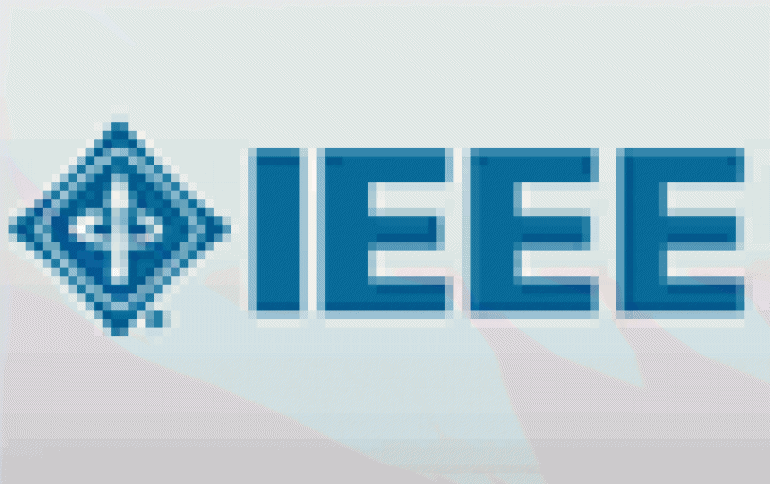
IEEE Works on Two New Wireless Standards
The Institute of Electrical and Electronics Engineers (IEEE) has approved work to begin on two new standards for heterogeneous wireless networks based on the existing IEEE 1900.4 standard.
"Since its approval in January, IEEE 1900.4 has already become the baseline standard for defining architectural building blocks enabling network-device distributed decision making for optimized radio resource usage in heterogeneous wireless networks," says Paul Houz? of France Telecom-Orange Labs, chair of the IEEE 1900.4 Working Group, which is developing the standards. "These two new standards will further enhance the original 1900.4 standard by facilitating cost-effective and multi-vendor production of wireless access system."
The first project, IEEE P1900.4a, an amendment to IEEE 1900.4, will examine architecture and interfaces for dynamic spectrum access networks in white space frequency bands. The proposed standard would define new components (both entity(s) and interfaces) for operating in white space frequency bands in addition to IEEE 1900.4 entities and interfaces.
"It is very likely that white spaces usage may not be the same in each region or country," said Houz?, "and several radio interfaces may be used for different use cases. It is also probable that regulation will vary from a region to another. However, we have the opportunity to standardize a common management system that we could use independently of the radio interfaces choice. This unique management system will enable the white spaces devices to fulfil with the regulation in vigour in a given place at a given time. In particular, the protection of broadcast systems should be absolutely reliable. Because 1900.4 is a dynamic policy-based system, it is very well suited to the changing and non-homogeneous white spaces context."
The second new standards project, IEEE P1900.4.1, "Standard for Interfaces and Protocols Enabling Distributed Decision Making for Optimized Radio Resource Usage in Heterogeneous Wireless Networks," will provide detailed description of interfaces and service access points defined in the IEEE 1900.4 standard in order to ensure interoperability between network side and terminal side components of the IEEE 1900.4 system.
The standards are sponsored by the IEEE-SASB Coordinating Committees/SCC41 - Dynamic Spectrum Access Networks.
The first project, IEEE P1900.4a, an amendment to IEEE 1900.4, will examine architecture and interfaces for dynamic spectrum access networks in white space frequency bands. The proposed standard would define new components (both entity(s) and interfaces) for operating in white space frequency bands in addition to IEEE 1900.4 entities and interfaces.
"It is very likely that white spaces usage may not be the same in each region or country," said Houz?, "and several radio interfaces may be used for different use cases. It is also probable that regulation will vary from a region to another. However, we have the opportunity to standardize a common management system that we could use independently of the radio interfaces choice. This unique management system will enable the white spaces devices to fulfil with the regulation in vigour in a given place at a given time. In particular, the protection of broadcast systems should be absolutely reliable. Because 1900.4 is a dynamic policy-based system, it is very well suited to the changing and non-homogeneous white spaces context."
The second new standards project, IEEE P1900.4.1, "Standard for Interfaces and Protocols Enabling Distributed Decision Making for Optimized Radio Resource Usage in Heterogeneous Wireless Networks," will provide detailed description of interfaces and service access points defined in the IEEE 1900.4 standard in order to ensure interoperability between network side and terminal side components of the IEEE 1900.4 system.
The standards are sponsored by the IEEE-SASB Coordinating Committees/SCC41 - Dynamic Spectrum Access Networks.




















